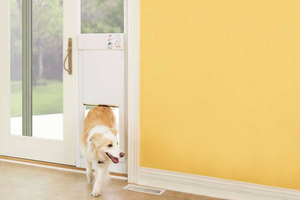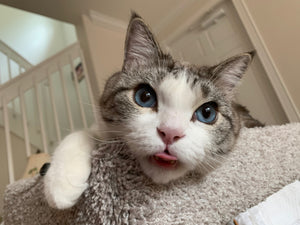What Does Catnip Do to Cats?
It’s no secret that cats love catnip! The leafy green herb seems to have an immediate effect on almost any cat. It’s a great way to enrich your cat’s life or to keep indoor cats happy and prevent door dashing.
Naturally, many of us are wondering what catnip is and how much catnip is safe for cats. We’ll go over everything you need to know about catnip, including the following topics:

What Is Catnip?
Catnip belongs to the mint family, giving it its leafy green appearance and fresh minty scent. The mint family has about 250 species, catnip is one of them.
Catnip is native to Europe and Asia and also goes by the name Nepeta cataria. It was introduced to America around the 18th century when settlers took plant cuttings with them for food and medicinal purposes while traveling to the New World.
Why Do Cats Like Catnip?
Catnip contains a chemical called Nepetalactone. Nepetalactone and its isomers make up 70-99% of the essential oil in catnip that produces effects in cats. Although the specifics on why this chemical causes a reaction in cats is not yet definitive, many scientists are fairly certain of the reasons behind its effects.
When Nepetalactone enters a cat’s nasal tissue it binds to receptors that trigger an emotional response in the brain similar to a cat’s natural response to pheromones. The effects of catnip generally last around ten minutes.
What Does Catnip Cause Cats to Do
These are some of the most common behaviors noted in cats resulting from catnip:
- Cheek and chin rubbing
- Rolling and flopping
- Sniffing
- Licking and chewing
- Head shaking
- Possible aggression
Do All Cats Like Catnip?
Interestingly, not all cats respond to catnip. The response is genetic and if passed from at least one parent, the offspring will inherit the response. Approximately 70-80% of cats are affected by catnip. The remaining percentage does not exhibit any reaction to the plant.
Catnip also has no effect in cats until they reach about 6-8 weeks old. These stats are the same for wild cats like lions, tigers, and leopards. Both domestic and wild cats have a special receptor in the roof of their mouth, the vomeronasal organ, that makes them particularly sensitive to the smell of catnip.
Can Cats Have Too Much Catnip?
Cats cannot overdose on catnip. However, it’s important to watch that your cat does not ingest large amounts at a time. Signs of overindulgence in catnip include diarrhea, dizziness, vomiting, and trouble walking.
It’s best to supervise your cat while they are enjoying some catnip and to use it as an occasional treat to avoid this issue. Look out for signs that ingesting catnip is causing any gastrointestinal upset in your cat.
If you are using a catnip plant, make sure you are certain that is actually what it is. Check out our article on pet-safe house plants for more details.
How to Give Your Cat Catnip
Whether you have an indoor cat or an outdoor cat, catnip can be used to enrich their life in many different ways. You can buy small bags of dried catnip to sprinkle around your cat’s scratchers and beds. Or you can buy catnip-filled toys or sprays.
Many pet shops will also have fresh catnip plants that you can bring home to your cat. If you have an outdoor cat, consider planting some catnip outside for an enjoyable snack. It is available in the herb section of most nurseries. Just note that catnip plants grow pretty large and like to have sandy soil and full sun. To give your outdoor cat easy access, check out the best cat doors of 2022.
We hope this helped shed some light and everything you need to know about catnip! For some more fun enrichment options, check out how to leash train your cat so you can take them on walks!




